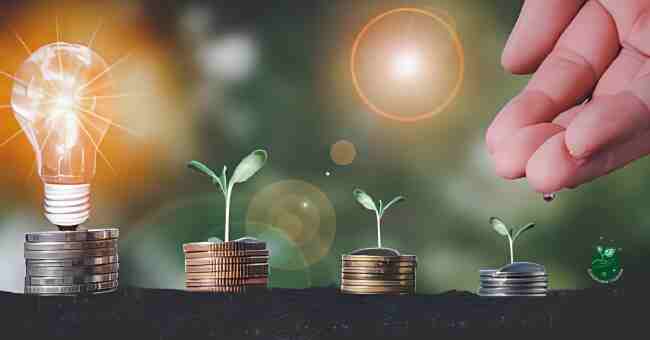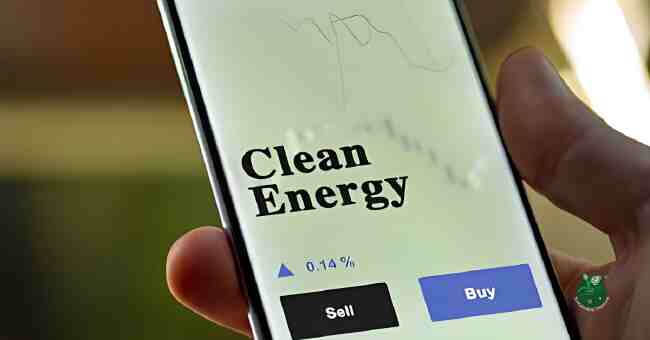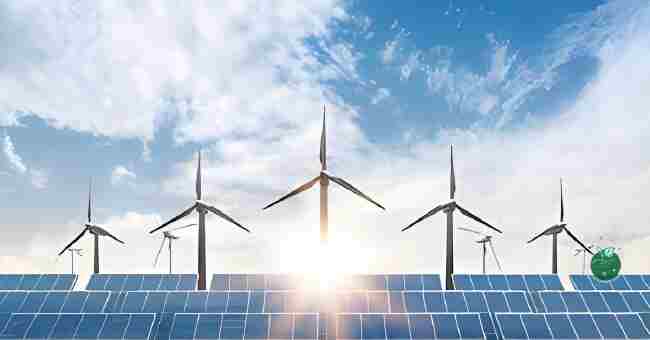Table of Contents
What are the Clean Tech Investment Opportunities in Asia? This rapidly emerging market is rife with lucrative possibilities for the forward-thinking investor. The region’s escalating energy demands, ecological concerns, and government policies favoring renewables have catalyzed a renewable energy renaissance.
I vividly recall my first encounter with Asia’s clean tech potential during a visit to rural Thailand.
Witnessing impoverished villages grappling with ubiquitous waste and energy poverty, I was struck by the transformative impact renewable solutions could yield.
By investing in these sustainable firms, we can uplift vulnerable communities while earning profits benefiting the economy, environment, and society.
Let me elaborate on 20 such investment prospects pioneering Asia’s clean tech future.
Trina Solar (China)

One of the world’s leading solar panel manufacturers, Trina Solar has already established a commanding presence in the photovoltaic market. With operations across Asia, the Middle East, Africa, Europe, and the Americas, this Chinese behemoth is poised to capitalize on the global transition toward solar energy.
China aims to install a staggering 1,200 gigawatts of wind and solar capacity by 2030 – nearly half of the planet’s renewable power. Trina Solar stands to be a prime beneficiary.
The company offers a diverse range of solar solutions for residential, commercial, and utility-scale applications, bolstering its potential customer base.
Suzlon Energy (India)
As Asia’s foremost wind turbine manufacturer, India’s Suzlon Energy has erected over 12,000 megawatts of wind capacity across 18 countries.
The firm’s cutting-edge technologies, extensive operational experience, and robust order book collectively position it as a prime regional investment prospect.
| Year | Revenue (USD Billions) |
|---|---|
| 2022 | 1.35 |
| 2021 | 1.17 |
| 2020 | 0.96 |
| 2019 | 1.09 |
Envision Energy (Singapore)
This Singapore-based innovator develops groundbreaking AI and IoT technologies to optimize renewable asset performance and grid integration globally. With over 30 gigawatts of renewables assets monitored worldwide, Envision is well-poised to facilitate Asia’s clean energy transition.
Some key Envision energy solutions:
- EnOS™ AI Platform for renewables management
- EVM™ Monitoring System for wind/solar assets
- ESC™ Energy Operating System
Gegadyne Energy Labs (Thailand)
Gegadyne’s rotating disk reactor technology affordably converts waste biomass into high-quality biofuels, bioplastics, and biochemicals.
This decentralized production approach aligns perfectly with Southeast Asia’s dispersed agricultural communities while mitigating waste issues.
With robust funding from investors like Equis and Liquidstar, Gegadyne aims to proliferate its game-changing biorefineries across rural Asia.
Xinjiang Goldwind Science & Technology (China)
Established in 1998, Goldwind is China’s largest wind turbine manufacturer. The firm has installed over 60 gigawatts of wind capacity across six continents, repeatedly setting industry benchmarks through its innovative technologies.
Some key innovations:
- Permanent Magnet Direct Drive (PMDD) technology
- Patented Diffuser Augmented Wind Turbine design
- Remote Condition Monitoring/Diagnostics systems
Having penetrated over 30 overseas markets, Goldwind boasts substantial international growth prospects.
LYS Energy (Singapore)
Spearheading a novel lithium-ion battery recycling technology, LYS Energy aims to revolutionize the energy storage industry. The firm’s highly efficient, low-emission recycling process recovers over 95% of battery electrode materials for reuse.
Given Asia’s escalating battery demands for electric vehicles and grid storage, LYS stands to play a pivotal role in the circular economy.
Orion Energy Partners (India)
As Asia’s premier renewable investment platform, Orion provides capital for developing utility-scale wind and solar projects across the region. With $2.8 billion under management, the firm has already financed over $7 billion in clean assets globally.
Current Orion investment projects in Asia:
- 300 MW wind portfolio across Andhra Pradesh, India
- 450 MW solar project in Rajasthan, India
- 185 MW wind park in Ninh Thuan, Vietnam
Orion’s expertise in structuring clean energy investments positions it as an ideal facilitator for Asia’s transition.
Sungrow Power Supply (China)
Pioneering solar inverter technologies, Sungrow has shipped over 224 gigawatts worldwide – enough to power Austria’s entire electricity consumption. The firm supplies inverters and energy storage systems for all solar application segments.
| Product | Description |
|---|---|
| Residential PV Inverters | 2-10 kW models for home solar installations |
| Commercial PV Inverters | 30-160 kW units for commercial/industrial use |
| Utility PV Inverters | 2.5-8 MW central inverters for solar farms |
| Energy Storage System (ESS) Inverters | 19-252 kW inverters for battery connectivity |
Already serving over 150 nations, Sungrow’s global reputation enhances its prospects across the region.
Greenko Group (India)
With a diversified clean energy portfolio spanning solar, wind, and hydropower, Greenko aims to become India’s leading renewable company by 2025. The firm currently manages over 7.3 GW across 110+ operational assets.
Some of Greenko’s key projects:
- 1 GW Integrated Renewable Energy Storage Project (India’s largest)
- 900 MW Wind-Solar Hybrid Energy Farm in Karnataka
- 500 MW Pumped Storage Project in Andhra Pradesh
Greenko’s innovative energy storage approach lends flexibility to mitigate intermittent renewables issues.
Dezhou Huaneng (China)
As the Chinese renewables subsidiary of Huaneng Power Group, Dezhou Huaneng specializes in renewable energy generation and services. With 4.5 GW of operational clean capacity, it aims to reach 30 GW by 2025.
Distribution of Dezhou Huaneng’s current portfolio:
- Onshore Wind: 41%
- Solar PV: 37%
- Offshore Wind: 18%
- Biomass: 4%
The company’s balanced portfolio and ambitious scale afford it tremendous growth potential within China’s climate agenda.
Hitachi Zosen (Japan)
Hitachi Zosen has been developing advanced renewable solutions for decades, from biogas plants to offshore wind structures. Its clean energy competencies include:
- Biomass/waste-to-energy plants
- Anaerobic digestion facilities
- Offshore wind substructures
- Geothermal power systems
With over 900 biogas and incineration plants globally, Hitachi Zosen holds specialized expertise facilitating circular economies.
AboitizPower (Philippines)
Transitioning from coal, AboitizPower aims to achieve a 50% renewable energy mix by 2030.
The Philippine utility currently operates 47 small hydropower plants alongside substantial solar and geothermal assets.
Some key AboitizPower renewable facilities:
- 59 MW Tiwi Geothermal Power Plant (Philippines’ first)
- 94 MW Bakun Hydropower Complex in Benguet
- 59 MW San Carlos Sun Power Plant (Negros Island)
As the Philippines intensifies clean energy adoption, AboitizPower is strategically positioned to capitalize on this transition.
Jinko Solar (China)
A global solar PV leader, Jinko Solar has fabricated over 100 million panels deployed across 3,500 utility, commercial, and residential projects worldwide. The company operates 11 state-of-the-art factories producing solar cells, modules, and other components.
Some Jinko innovations accelerating solar affordability:
- N-type monocrystalline silicon cells (higher efficiency)
- Tiling ribbon wiring to reduce cell gaps
- Integrated solar trackers for greater energy yield
With over 35 GW of annual module capacity, Jinko aims to propel Asia’s rapid solar expansion.
Azure Power (India)
Through its portfolio of large-scale solar assets, Azure Power generates sustainable, reliable energy for India’s growing urban populations. As a leading independent renewable producer, Azure currently operates over 3 GW of utilityscale projects.
The company’s massive 7 GW+ pipeline across 24 states positions it to meet India’s skyrocketing clean energy needs.
Tuas Power (Singapore)
Tuas Power is pioneering cutting-edge hydrogen, solar, wind and energy storage technologies to diversify Singapore’s energy mix. The utility recently unveiled ambitious plans for an import-renewable hydrogen plant by 2030.
Some key Tuas Power clean initiatives:
- Solar deployment across 1,600 HDB rooftops
- Grid-scale battery systems for energy storage
- Waste-to-energy facilities utilizing circular economy principles
Tuas is at the vanguard of Singapore’s clean tech transition through its multipronged sustainability efforts.
Sinohydro (China)
As China’s preeminent hydropower developer, Sinohydro has constructed over 20% of the nation’s total installed hydro capacity. Operating across 80 countries, it has participated in myriad major dam and power station projects worldwide.
Recent international Sinohydro hydroelectric projects:
- 1,285 MW Xayaburi Dam (Laos)
- 343 MW Isimba Plant (Uganda)
- 1,870 MW Gediz Plant (Turkey)
With proven expertise in challenging large-scale implementations, Sinohydro will likely play a pivotal role in meeting Asia’s growing hydropower needs.
Orb Energy (India)
Bringing solar power to rural communities, Orb Energy designs, installs, and finances decentralized photovoltaic systems. This innovative business model empowers villages across India while accelerating clean tech adoption.
Key Orb Energy offerings:
- Off-grid solar for telecom/rural electrification
- Rooftop solar for small businesses/residences
- Solar water pumping for agricultural needs
Having raised over $35 million, Orb aims to proliferate its mini-grids and rooftop solutions throughout rural Asia.
Longi Green Energy (China)
As the world’s leading solar monocrystalline module manufacturer, Longi continues pioneering next-generation photovoltaic technologies to enhance efficiency and affordability. Its advanced proprietary techniques include:
- Monocrystalline PERC Cell Architecture
- Seamless Soldering and Tiling Ribbon Integration
- Bifacial Module Design for Dual-Sided Power Generation
Boasting 65 GW of high-efficiency module capacity, Longi is optimally equipped to provision Asia’s burgeoning solar markets.
Blue Leaf Energy (Thailand)
Blue Leaf Energy develops innovative waste management solutions, converting municipal/agricultural refuse into renewable biogas for power generation, transportation fuels, and industrial applications.
Some key Blue Leaf biogas facilities:
- Ratch Biofuel Plant (Thailand): Processes 430 tons/day of palm waste
- SOEX Bangkok Plant: Digests 500 tons/day of municipal waste
- Future Anupong Plant: Will gasify 4,000 tons/day of waste
By transforming problematic waste streams into clean energy, Blue Leaf tackles multiple sustainability challenges concurrently.
China High Speed Transmission (China)
This state-owned manufacturer produces advanced components for the renewable energy sector, specializing in bearings for wind turbines. China High Speed Transmission’s cutting-edge products and solutions include:
- Pitch Control Systems for wind blade adjustment
- Yaw Systems governing nacelle orientation
- Main Shaft Bearings supporting turbine drivetrain
With over 10,000 wind bearing units deployed globally, the company has developed robust expertise facilitating wind farms.
FAQs

What is clean tech?
Clean technology, often shortened to “cleantech,” refers to products, services, and processes that reduce or eliminate negative environmental impacts. This can include renewable energy sources like solar and wind, but also encompasses areas like green transportation, waste management, energy efficiency, and sustainable manufacturing processes.
The cleantech sector aims to find innovative ways to meet society’s needs for energy, transportation, housing, and consumer goods while minimizing greenhouse gas emissions, pollution, and the depletion of natural resources. For investors, cleantech represents an opportunity to earn returns while supporting sustainable development that protects the planet’s future.
Why Invest in Asian Clean Tech?
Asia is both one of the fastest-growing economic regions and largest sources of greenhouse gas emissions globally. As nations like China, India, and Southeast Asian countries rapidly develop, their energy demands are skyrocketing – demands that must be met through renewable sources to mitigate climate change.
This intersection of economic growth and environmental necessity makes Asia ground zero for the cleantech revolution. By investing in the region’s clean energy, electric vehicle, green manufacturing, and other sustainable firms, investors can potentially earn lucrative returns while catalyzing technologies that produce positive environmental impact where it’s needed most.
What are Some Top Clean Tech Investment Opportunities in Asia?
Leading cleantech investment prospects in Asia span sectors like renewable energy generation, energy storage, biofuels, recycling, and green transportation.
Some of the most promising include solar giants like Trina Solar, Jinko Solar, and Longi; wind turbine manufacturers such as Suzlon, Goldwind, and Sinohydro; and innovative companies like LYS Energy in battery recycling and Gegadyne in biofuels.
Many of these firms are at the cutting-edge of their respective fields, pioneering next-generation technologies to enhance efficiency and sustainability.
With the tailwinds of government policies and escalating regional demands, they offer compelling long-term investment narratives for environmentally-conscious investors.
How Can I Evaluate Clean Tech Companies To Invest In?
When evaluating potential cleantech investment opportunities, it’s important to look at both the innovativeness and commercial viability of the underlying technology, as well as the company’s financial performance, growth prospects, and competitive advantages. Factors to assess include:
Intellectual property and proprietary tech innovations that differentiate the firm Manufacturing scale, operational efficiency, and cost structure
Proven deployment track record and major client/partner base Revenue growth, profit margins, and cash flow profiles Total addressable market size and avenues for expansion
It’s also wise to favor companies prioritizing sustainability internally through measures like achieving net-zero emissions, utilizing renewable energy in operations, and embracing circular economy principles.
What Are Some Risks of Clean Tech Investing?
Like any emerging sector, cleantech investing carries certain risks that require prudent evaluation. Many cleantech firms are still pre-revenue or struggling with commercializing their innovations cost-effectively at scale. There are also regulatory risks if government incentives or carbon policies shift unfavorably.
Other risk factors include heightened competition from both incumbents and new startups, the capital-intensive nature of cleantech projects, and the boom-and-bust cycles that can occur with new technologies unleashing periods of over-exuberance followed by retrenchment. Diversification across different cleantech subsectors can help mitigate these risks.
How Can I Get Started Investing in Asian Clean Tech?
There are several avenues investors can take to gain exposure to Asia’s cleantech opportunities depending on their goals, risk tolerance, and investible capital levels:
Individual public company stocks of leading cleantech manufacturers in areas like solar, wind, biofuels, etc. Cleantech-focused mutual funds or exchange traded funds (ETFs) providing diversified regional exposure Private investments into pre-IPO cleantech startups and venture funds Green bonds issued by governments, utilities, and project developers financing renewable energy projects
Conducting thorough due diligence, defining an investment thesis, and developing an asset allocation strategy aligned with your objectives is crucial before deploying capital.
Who Are Some of The Major Clean Tech Investors in Asia?
While the cleantech investment landscape in Asia is still relatively nascent, several major funds and financial institutions have established a presence as the sector matures:
Private Equity Firms: Equis, Asia Climate Partners, Asia Green Fund Venture Capital: Wavemaker Partners, Beenext, Renewable Energy Trust Capital Partners Institutional Investors: Temasek, GIC, Asian Development Bank
Many global investors, family offices, and even oil & gas majors have also been deploying substantial capital into Asian cleantech over the past decade as the long-term growth prospects become more apparent.
How Do I Find Trustworthy Cleantech Investment Analysis?
To find authoritative cleantech investment research and expert analysis, here are some reputable sources to consult:
Investment Banks/Brokerages: Major banks like Goldman Sachs, Morgan Stanley, and HSBC publish periodic cleantech equity strategy reports
Consulting Firms: Boston Consulting Group, McKinsey, and others release in-depth clean technology market studies NGOs/Think Tanks: Groups like REN21, IEA, IRENA, and ClimateWorks provide policy and industry data Media: Cleantech-focused publications like Greentech Media, CleanTechnica, and Rethink Energy offer ongoing analysis
Tapping into the insights from the analysts and industry experts closely following the sector’s evolution can yield an informational edge over generalist investors.
Conclusion
In reviewing the “Clean Tech Investment Opportunities in Asia,” we’ve explored 20 firms spearheading the region’s transition to renewable power sources like solar, wind, biofuels, and energy storage. From manufacturing solar panels and wind turbines, to innovating bioenergy solutions and recycling lithium batteries, these companies represent the cutting-edge of sustainable development.
Key takeaways include recognizing Asia’s rapidly compounding clean tech demands, the diverse solutions being pioneered, and the immense growth runway ahead.
For investors seeking long-term returns while catalyzing positive change, allocating capital to this high-impact sector is an opportunity not to be squandered. The time to ride Asia’s clean tech wave is now.



